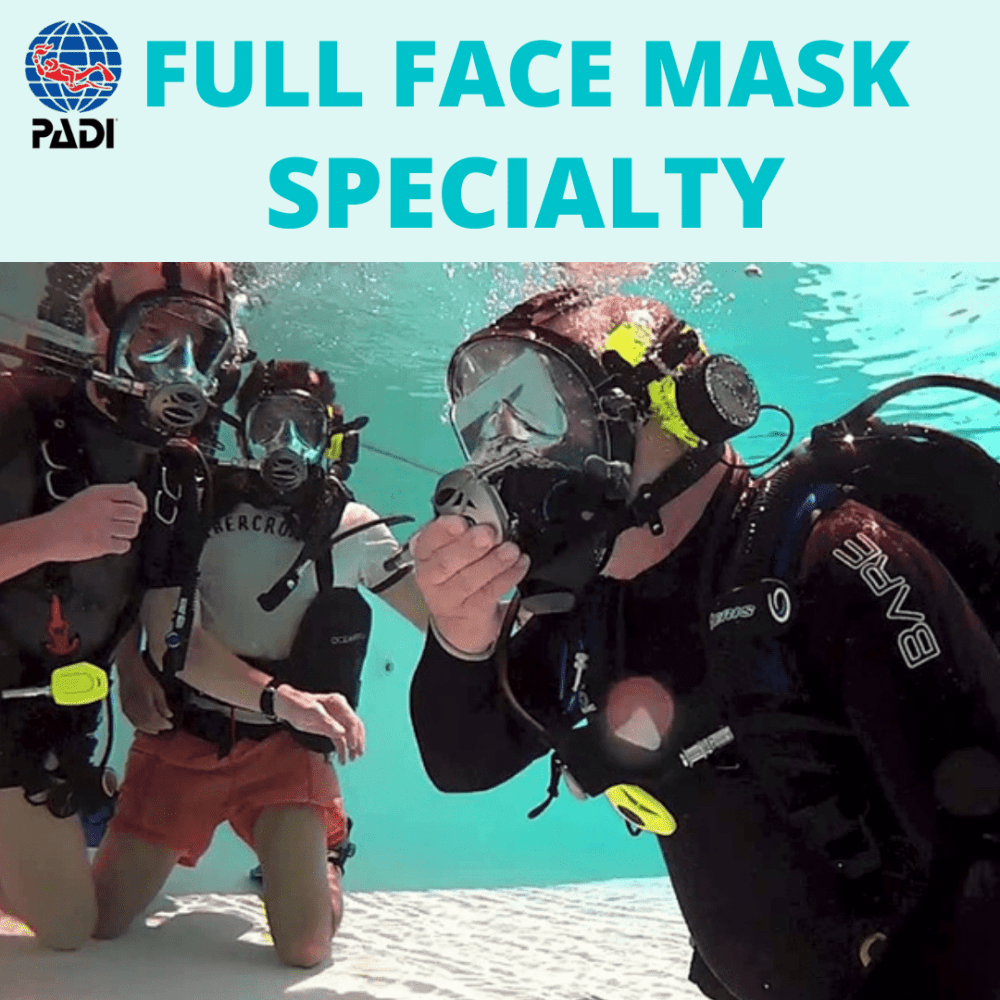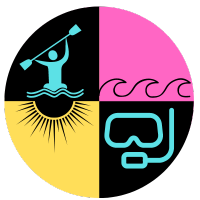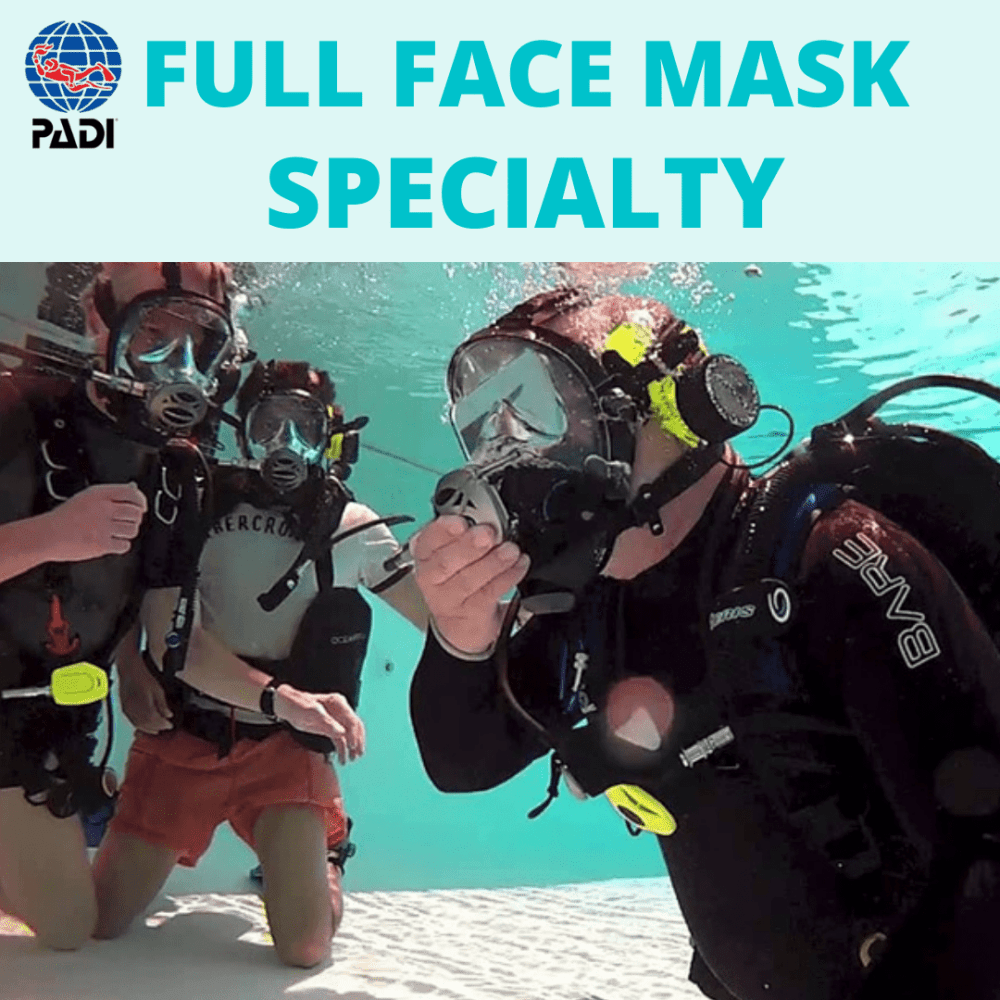New England Dive
PADI Full Faced Mask Specialty
PADI Full Faced Mask Specialty
Description
Working divers, such as public safety divers, use full face masks because they protect the eyes and nose from contaminants in the water, provide comfort in cold water, and allow for communication. If you're interested public safety diving, scientific diving, or venturing into extremely cold-water, then learning to dive with a full face mask is definitely for you. Because full face masks allow you to breathe from your nose, they are also beneficial for those who have difficulty using standard scuba masks. Diving with a full face mask offers a different experience and that alone may be reason to give it a try.
You need to be a PADI Open Water Diver who is at least 12 years old to enroll in the Full Face Mask Diver course.
Academic
There are several different types of full face masks, so you begin learning about varying mask features and components. Next, you learn techniques for preparing and diving with a full face mask as well as proper maintenance. During a confined water dive, you get comfortable using your mask and practice skills in preparation for your open water dives. In open water, during two dives, you'll demonstrate your ability to:
- Properly prepare and check your mask for the dive.
- Make adjustments underwater and clear water out of the mask.
- Respond to simulated out-of-gas emergency situations.
Equipment
Besides your basic scuba equipment, you'll need a full face mask that fits you and works with a regulator. You also need to have an alternate air source. Your PADI Instructor or dive staff will suggest other gear as appropriate, such as a dry suit if diving in cold water.
Couldn't load pickup availability
Reschedule Policy
Reschedule Policy
Reschedule Policy
We understand that life happens, and plans can change. That’s why we’re happy to offer one complimentary reschedule for students who provide at least 10 days notice before their scheduled class. For reschedule requests made within 10 days of the class start date, a fee of $97 may apply to help cover preparation costs. Thank you for your understanding!

More Information
Require additional assistance or interested in learning more about our comprehensive training offerings? Feel free to reach out to us by dropping a note, and our experienced dive instructors will be delighted to assist you every step of the way. Whether you're seeking to start your dive journey or exploring more opportunities, we're here to help you dive deeper into your diving journey.

